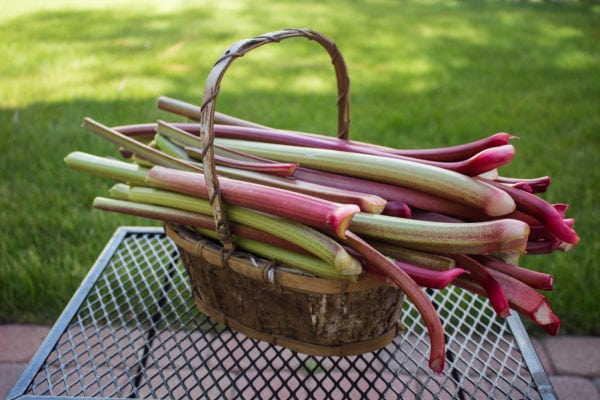In every season, it’s important to eat a variety of colorful fruits and vegetables—especially those that are dark green, red, and orange. Delicious strawberries, apricots, mangoes and rhubarb are at their best during the spring months. This handy guide offers information on picking the best spring fruit and the health benefits of each.
Apricots
Before peaches, plums and berries appear in markets, apricots arrive. Most apricots are destined to be canned or dried, and their season is fleeting, so get fresh ones fast.
What You Get: Low in calories and packed with nutrients, just three fresh apricots will give you 40 percent of the vitamin A you need for the day along with a healthy dose of vitamin C.
Shopping Tips: Purchase plump, fairly firm apricots that are orange-yellow to orange. Ripe apricots are soft and juicy—they should be eaten as soon as possible.
Storage Tips: To ripen apricots, place hard fruit in a brown paper bag for one or two days. Ripe apricots should be stored in the refrigerator to prevent over-ripening. Fresh apricots can be frozen: just halve the fruit, remove the pit and freeze on a baking sheet. Once frozen, place the apricots in a sealable plastic bag.
Mangoes
Mangoes have been integrated into food in many cultures across the globe—sold fresh, as juice, in drinks, in curries and in desserts.
What You Get: The deep orange color of mangoes comes from beta carotene, a potent antioxidant. Mangoes are an excellent source of vitamin C and also deliver fiber.
Shopping Tips: Color is not an indication of ripeness, as mangoes come in many shades of green, yellow and red. Choose mangoes with a slight “give” if you plan to eat them in a day or two and choose firmer mangoes for enjoying later.
Storage Tips: Unripe mangoes will ripen at room temperature. Refrigerate ripe mangoes for up to five days.
Rhubarb
Rhubarb may be nicknamed the “pie plant” in the U.S. because it’s so closely identified with strawberry-rhubarb pie—but it also lends a tart tanginess and bright color to green salads. Rhubarb juice can also be used in vinaigrette. Stay away from the leaves, though—they contain poisons that, if ingested at very high levels, could cause any number of medical issues.
What You Get: Rhubarb is low in calories and full of fiber, potassium and vitamin C.
Shopping Tips: Look for bright, crisp stalks with minimal pitting, dryness or other visible damage.
Storage Tips: Refrigerate rhubarb in a plastic bag for up to a week. Freeze diced rhubarb in an airtight container for up to six months.
Strawberries
Few things are closer to perfection than a strawberry when its season arrives. Even though they’re plentiful in supermarkets year-round, nothing beats the flavor of a juicy, sun-ripened strawberry in season.
What You Get: Low in calories and rich in vitamin C, a one-cup serving of strawberries provides more than 100 percent of your daily vitamin C needs for only about 50 calories.
Shopping Tips: Strawberries do not ripen further after picking. Therefore, it is important to choose bright red berries, as white- or green-tipped strawberries are lacking in flavor. Don’t overlook the little ones—small strawberries are often sweeter than their big brothers.
Storage Tips: Refrigerate strawberries immediately. Wash the berries gently in cool water just before you plan to eat them, leaving the caps on until after they are washed.
Spring Fruit Season






